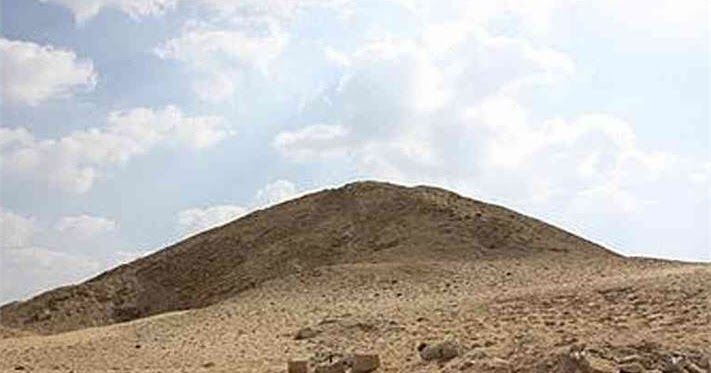Introduction
When people dream of Egypt, their minds often drift to the colossal pyramids of Giza, with their soaring stone structures dominating the desert skyline. Yet, just beyond the spotlight of the famous trio lies a quieter but equally fascinating story—one told through the pyramids of Egypt’s queens. Among them, the Iput I and Khuit Pyramids stand as reminders that the Old Kingdom was not only shaped by powerful kings, but also by the influential women who stood beside them.
Located in Saqqara, the sprawling necropolis of ancient Memphis, these two pyramids may not tower as high as those of Khufu or Khafre, but their historical and cultural significance is profound. They reflect the prestige of royal wives, the changing architecture of the 6th Dynasty, and the intricate religious beliefs surrounding death and the afterlife.
For modern travelers seeking more than just the postcard view of Egypt, the pyramids of Iput I and Khuit provide an intimate window into a royal household, revealing how queens were honored, remembered, and immortalized in stone. This blog will take you on a deep journey into their history, design, excavation, and importance—while also offering a practical guide for visiting these hidden treasures.

Who Were Iput I and Khuit?
Queen Iput I
Queen Iput I was the consort of King Teti, the founder of the 6th Dynasty (c. 2345–2181 BCE), and the mother of Pepi I, who would later ascend to the throne. Her importance in Egyptian history cannot be overstated—her bloodline ensured dynastic stability during a period when power struggles and conspiracies often threatened the throne.
She was originally buried in a mastaba-style tomb, but her remains were later transferred into a pyramid structure within Teti’s pyramid complex. This act alone demonstrates her significance, as only queens of high standing were afforded such honors.
Queen Khuit
Queen Khuit, also a consort of King Teti, was less politically prominent than Iput I but equally honored through her pyramid. Her burial reflects the king’s desire to secure divine protection and prestige for his wives. While fewer inscriptions remain compared to Iput I, her pyramid reinforces the role of queens as vital partners in kingship and in the spiritual maintenance of the royal household.
Together, these two queens symbolize the matriarchal strength of the 6th Dynasty, offering a parallel story to the great kings of the Old Kingdom.
The Role of Queens’ Pyramids in Ancient Egypt
The pyramids of queens were never built in isolation; they were part of larger pyramid complexes associated with their husbands. These structures served multiple purposes:
-
Political: cementing the queen’s connection to the king and dynastic lineage.
-
Religious: ensuring the queen’s rebirth in the afterlife alongside her husband.
-
Cultural: demonstrating the wealth, devotion, and prestige of the royal family.
By the time of the 6th Dynasty, queens’ pyramids had become a regular feature of royal necropolises, reinforcing the sacred partnership between king and queen not only in life but also in eternity.
Location of the Iput I and Khuit Pyramids
Both pyramids are located at Saqqara, a vast burial ground about 30 kilometers south of Cairo. Saqqara is best known as the site of the Step Pyramid of Djoser, the world’s first stone pyramid, designed by the legendary architect Imhotep.
The pyramids of Iput I and Khuit are situated near the pyramid of Teti, aligning them with his funerary complex. This spatial connection was deliberate—placing the queens physically and symbolically close to their king. Visitors today will find them not far from Teti’s own pyramid, often overshadowed by larger monuments, yet rich with historical depth for those who look closer.
Architecture and Design
Iput I’s Pyramid
The pyramid of Iput I is modest compared to the giants of Giza. Built from local limestone and rubble, it once stood about 21 meters high, with a base length of roughly 27 meters. Time and erosion have reduced it to little more than a ruin, but the remnants still tell an intriguing story.
Inside, archaeologists discovered a granite sarcophagus, fragments of canopic jars, and wall inscriptions. Some chambers contained evidence of pyramid texts, though less extensive than those in kings’ pyramids. These texts were magical spells meant to guide the deceased through the afterlife, reflecting the queen’s divine role even beyond death.
Khuit’s Pyramid
The pyramid of Khuit shares architectural similarities with Iput I’s, though slightly smaller in scale. It too was constructed of limestone and rubble, a cost-effective method of the late Old Kingdom. The burial chamber, though looted in antiquity, once held funerary goods, amulets, and offerings.
The layout of both pyramids was relatively simple, with a descending passage leading to the burial chamber. Unlike the elaborate temples of kings, the queens’ pyramids prioritized functionality and symbolic association with their husbands.

Archaeological Discoveries
Excavations at Saqqara have shed light on the pyramids of Iput I and Khuit, though much remains damaged due to looting and the passage of time.
Key findings include:
-
Sarcophagi fragments confirming royal burials.
-
Canopic jars used to preserve organs for the afterlife.
-
Inscriptions linking Iput I to Pepi I, reinforcing her role as his mother.
-
Fragments of reliefs depicting offering rituals and protective deities.
These discoveries not only provide insight into the queens’ identities but also contribute to the broader understanding of funerary practices in the 6th Dynasty.
Cultural and Religious Importance
In ancient Egypt, queens were not passive consorts. They held religious titles such as “King’s Mother”, “She Who Sees Horus and Seth”, and sometimes acted as regents or priestesses. Their pyramids symbolized their eternal role as guardians of kingship and as participants in the cosmic balance of ma’at (harmony).
The inclusion of pyramid texts in Iput I’s pyramid is particularly significant, as it reflects the democratization of afterlife beliefs. What was once reserved for kings began to extend to queens, showing an evolution in Egyptian spiritual thought.
Comparison with Other Pyramids
The pyramids of Iput I and Khuit may seem small compared to those of Giza or Dahshur, but they are vital pieces of the puzzle in Egypt’s architectural evolution.
-
Giza Pyramids: colossal, precise, built during the 4th Dynasty’s height of power.
-
Saqqara Pyramids: smaller, symbolic, built during the 6th Dynasty when resources and central authority were beginning to wane.
In this way, the queens’ pyramids serve as historical markers of Egypt’s transition—from monumental grandeur to more modest, symbolic constructions.
Visiting the Iput I and Khuit Pyramids Today
For modern tourists, the Iput I and Khuit Pyramids are often overlooked gems. Here’s what to know before visiting:
-
Getting There: Saqqara is about a 45-minute drive from central Cairo. Private tours, taxis, or organized day trips are the easiest ways to reach it.
-
What You’ll See: While the pyramids are largely in ruin, their location near Teti’s pyramid and the Step Pyramid of Djoser makes them part of a rich archaeological circuit.
-
Best Time to Visit: Early morning, when the desert is cooler and the site less crowded.
-
Nearby Attractions: Don’t miss the Imhotep Museum, the Pyramid of Unas, and the Serapeum of Apis.
Standing before these ruins, you’ll feel a quieter, more intimate connection to Egypt’s history—one that isn’t crowded by the massive tourist numbers of Giza.
Why These Pyramids Matter
The Iput I and Khuit Pyramids may not compete in size, but they compete in meaning. They represent:
-
The importance of queens in sustaining dynastic continuity.
-
The expansion of religious privilege beyond kings.
-
The adaptation of architecture in times of political and economic change.
For historians, they mark an era of transition in the Old Kingdom. For travelers, they are a chance to step off the beaten path and uncover stories often overshadowed by larger monuments.
Conclusion
The pyramids of Iput I and Khuit are not just crumbling stones in the desert—they are symbols of resilience, devotion, and the complex web of royal life in ancient Egypt. Visiting them offers more than a photo opportunity; it offers a chance to connect with two queens who shaped the destiny of a dynasty.
While tourists flock to Giza and Luxor, those who journey to Saqqara will find treasures less known but equally powerful. For anyone passionate about history, culture, and discovery, the Iput I and Khuit Pyramids are must-sees—quiet guardians of Egypt’s royal women and the stories they continue to whisper across the sands of time.

